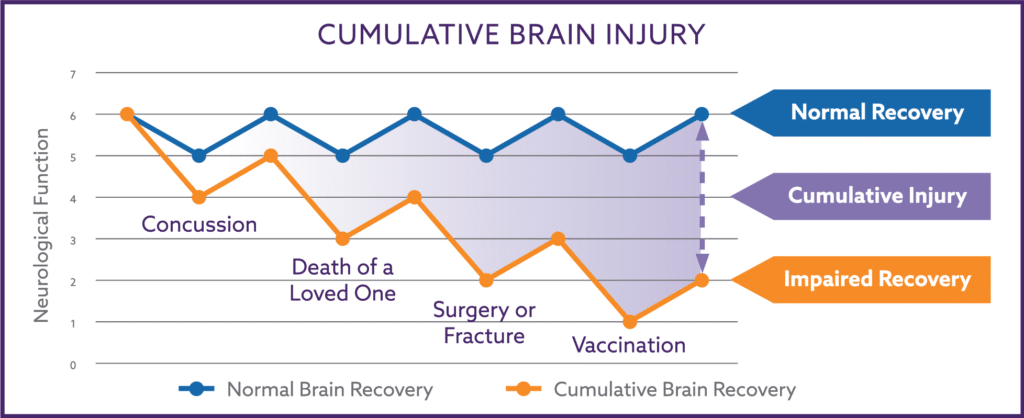Olive oil is the most important aspect of the Mediterranean diet. It contains phenols, oleic acid, and Vitamin E that help protect and improve the health of humans who consume olive oil regularly. The consumption of omega-3 fatty acids from food and fish also contributes to the positive benefits of a Mediterranean diet.
Vitamin E is a potent antioxidant that protects cells in the body from inflammatory oxidative stress. Oleic acid is an omega-9 monosaturated fat that protects the body from excessive amounts of inflammatory linoleic acid (an omega-6 polyunsaturated fat found in many vegetable oils and grain-fed livestock) as well as from the toxicity from other common saturated fats used in processed foods (palmitic acid).
Getting Enough Phenols in Your Olive Oil
While the health impact of Vitamin E and oleic acid are substantial, possibly the most uniquely powerful health-promoting aspect of extra virgin olive oil (EVOO) is phenols. The term phenol refers to a certain molecular structure that is often associated with improvements in health when eaten consistently.
Olive oil has a number of different healthy phenols. The regular consumption of 5 mg of phenols from olive oil is required for an individual to reap most of the health benefits associated with the Mediterranean diet.
The European Food Safety Authority (EFSA) regulations state that EVOO will improve an individual’s health when the oil contains about 5 mg of phenols per 20 grams of EVOO (approximately 30 ml or two tablespoons).
In layman’s terms, you want to include two tablespoons per day of extra virgin olive oil in your diet with an approximate total phenol count of 200 mg/kg (gallic eq mg/kg). The total phenol count is often listed on the oil producer’s website.
Minimizing exposure to light, excessive heat, phenol evaporation (phenols can leak out from plastic bottles), and oxygen within the bottle reduce the rate of phenol loss. Modern polylaminate bags commonly used in wine boxes are proving to be an excellent vessel for storing and dispensing olive oil since they will prevent all of these factors.
But More is Not Always Better
There is a growing misperception that buying the highest phenol-containing olive oil will give you the most benefit.
This is incorrect.
The medical benefit of chemicals, whether man-made medications or natural substances, is based upon a principle of saturation and not the principle of “more is better.”
As the daily dose of a particular health-promoting chemical increases, there is a corresponding increase in the positive effects of that chemical, but only up to a point. Beyond this point, the health potential stops because it has become “saturated,” and the risk of negative side effects from the chemical begins to increase.
This also holds for phenols from olive oil. Ultra-high phenol olive oils will certainly result in a much higher price for your oil, but due to the saturation of the health effect will not buy you greater health benefits.
A wide range of studies shows improvements in health with the consumption of olive oil containing high levels of phenols. The important point is that there is no significant evidence that consuming olive oil with a phenol count of 600 mg/kg, 800 mg/kg, or even 1000 mg/kg produces more health than an olive oil containing only 200 mg/kg.
I should add that olive oils with phenol counts in these very high ranges have an extremely strong flavor and may almost be unpalatable to some individuals. The phenols are the main chemicals that give olive oil a unique taste.
Ultra-High Phenol Counts Might Cause Harm
A recent animal study (2020, reference below) demonstrated that olive oil with an ultra-high phenol count of 800 mg/kg dose at a corresponding dose of 2 tablespoons per day in human adults showed that the olive oil improved the antioxidant benefit of some tissues but also worsened it in others.
The ultra-high phenol content provided antioxidative protective effects in muscle, brain, and small intestine tissues but caused an unhealthy effect in tissues of the spleen, pancreas, liver, and heart. The ultra-high phenol level increased oxidative stress within the mitochondria of the cells, causing them not to function as well.
Increased mitochondrial oxidative stress is one of the ways in which chronic inflammation impairs cellular function and is the exact opposite effect we are trying to achieve with The Nemechek Protocol.
The vast majority of olive oil consumed in the Mediterranean has phenol contents less than 150-200 mg/kg, and an olive oil phenol count of 800 mg/kg is four times the amount of phenols that are thought to be beneficial for health (around 200 mg/kg).
Historically, most individuals within the Mediterranean consume an average of 4 tablespoons of olive oil per day or more over their lifetime. If the average EVOO phenol level is about 150-200 mg/kg per 2 tablespoons, the daily average Mediterranean intake is approximately 300-400 mg/kg per day, far lower than the potentially toxic range cited in this study.
While this study does not constitute “proof” that high phenol counts are toxic, it should provide a bit of caution that if ultra-high phenolic olive oil is being consumed on a regular basis over the long term, it may, in fact, start having a negative effect on certain aspects of an individual’s health.
Phenols Naturally Decline in the Bottle
To complicate things a little more, the number of phenols in olive oil naturally declines about 15% every four months when stored in a cool location.
Since olive oil is typically stored and used over the course of a year until the EVOO from next year’s harvest is available, you need to buy olive oil with enough phenols so the natural decline will leave you near the sweet spot of a total phenol count of 200 mg/kg or more.
If stored appropriately, an olive oil starting with a total phenol count in the range of 350-300 mg/kg should provide you with phenol levels of approximately 220-190 mg/kg by year’s end. This amount of EVOO phenols is enough to ensure you are getting the full health benefits of your olive oil.
Takeaways About EVOO
Your takeaway from all of this is:
- Phenols are important to your health.
- Buy olive oils with phenol counts in the 300-400 mg/kg range. This range of oil at the time of bottling should still be near or above the 200 mg/kg range you need to maintain your health.
- A smaller amount of ultra-high phenol olive oil will not provide enough of the essential oleic acid and Vitamin E. You need enough of all three chemicals to get the full benefit of EVOO.
- Fresh oil is always better. Phenols naturally decline over time when in storage. Take caution with oils over 18 months old from the harvest date.
- Do not spend too much money on olive oil. The high cost of high phenol EVOO is not worth the money if you consume olive oil to maintain your health.
- High phenol EVOO generally has a very strong flavor. You or your family may not like it.
- Buy COOC-certified EVOO if available. Their laboratory testing of oil provides a high level of trust that the oil you provide your family is of high quality.
- If COOC-certified oil is not available, buy oils from local growers who are willing to list the phenol counts on their websites.
I am an internal medicine physician (D.O.) trained at UCLA, and my Internal Medicine and Autonomic Medicine practice are in the Phoenix, Arizona, area. For additional information, go to AutonomicMed.com.
This post is provided as an information resource and is not to be used or relied on for diagnostic or treatment purposes. This information is not intended to be patient education and does not create any patient-physician relationship.
Reference:
Kouka P, Tekos F, Papoutsaki Z, et al. Olive oil with high polyphenolic content induces beneficial and harmful alterations on rat redox status depending on the tissue. Toxicol Rep. 2020;7:421–432.


